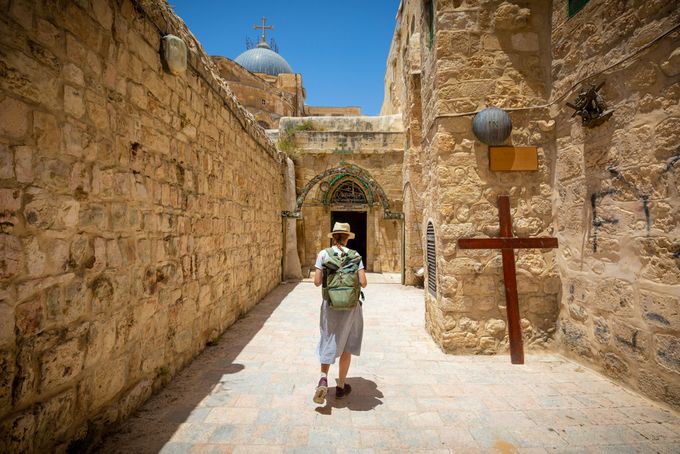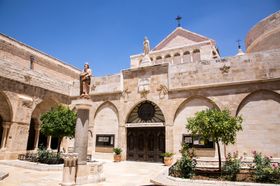Walking the Via Dolorosa in Jerusalem: Route and History
Published April 28, 2025

Via Dolorosa is a Latin phrase directly translating to "The Way of Suffering." This is an appropriate name for the Via Dolorosa in Jerusalem, as it was the path taken by Jesus Christ on his way to being crucified. He carried his own cross and wore a crown of thorns while he walked this route, so the name is fitting.
Today, the Via Dolorosa is a popular site for Christian pilgrims and tourists alike. You can walk along the Via Dolorosa and stop at various stations, all of which mark milestones in Christ's walk.
History of Via Dolorosa
The Via Dolorosa does not describe one street but rather multiple streets, which together compile the route taken by Christ as he walked with the cross. Throughout history, Christians have made their pilgrimage from the Mount of Olives down to Jerusalem and along Via Dolorosa. Today, its architecture and presence are enough to attract tourists from every background.
How to Walk the Via Dolorosa
Walking along the Via Dolorosa will take roughly an hour, but perhaps longer depending on how long you intend to stay at each station. It is a mostly effortless walk and can likely be completed by anybody. You can book a tour guide to explain where to go and detail the history for you, but it is not necessary.
There are 14 stations in total along the Via Dolorosa: 9 stations of the cross and 5 from the Church of the Holy Sepulcher. The walk begins inside Jerusalem's old city, and the different stations are all marked with plaques.
Station One
This station is the place where Jesus is handed over to and condemned by Pontius Pilate. Today there is a school called the Madrasa al-Omariya.
Station Two
Here, Jesus was scourged and handed the cross to carry.
Station Three
Along his journey, Jesus fell three times. Station three marks a point on his journey where Jesus fell to his knees under the weight of the cross for the first time. There is currently a chapel on Al-Wad street called the Polish Catholic Chapel, at the point where it happened.
Station Four
At this station, Jesus saw his mother, Mary, watching in the crowd.
Station Five
We are also introduced to Simon of Cyrene, as he took up the cross for Jesus.
Station Six
St. Veronica wiped Jesus' face with her own veil very close to the previous station.
Station Seven
This station is on Souq Khan al-Zeit street and is reportedly the place where Jesus fell for the second time.
Station Eight
At this station, Jesus encountered some of his followers weeping for him and consoled them.
Station Nine
This station marks the place where Jesus fell for the third and final time.
Station Ten
Here, inside the Church of the Holy Sepulchre, Christ was stripped of his clothes.
Station Elven
This is the point where Christ was nailed to the cross.
Station Twelve
This is where Christ died on the cross.
Station Thirteen
This is where Jesus was taken down from the cross. You can find many individuals praying at the statue of Our Lady of Sorrows for this event happening.
Station Fourteen
Station fourteen is the tomb in which Jesus was buried and then resurrected.
Walking along the Via Dolorosa is a truly humbling and introspective journey. It is recommended for both Christian and non-Christian tourists, as it is brimming with both religious and historical significance. It is something we recommend that everyone do if they have the opportunity.






